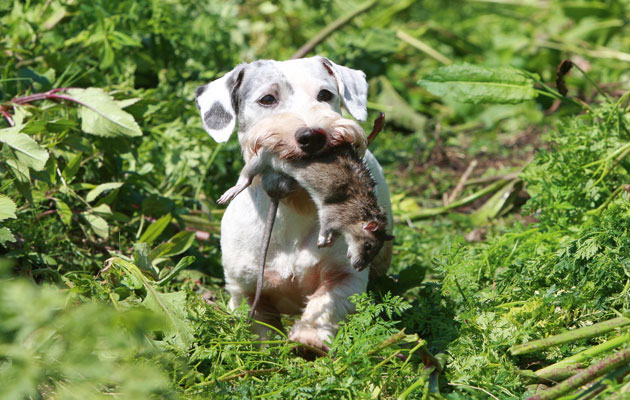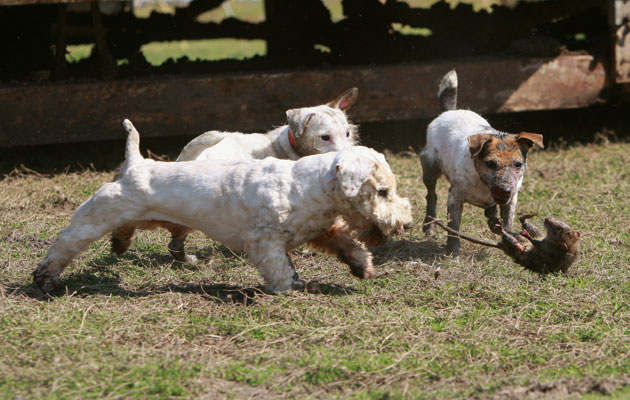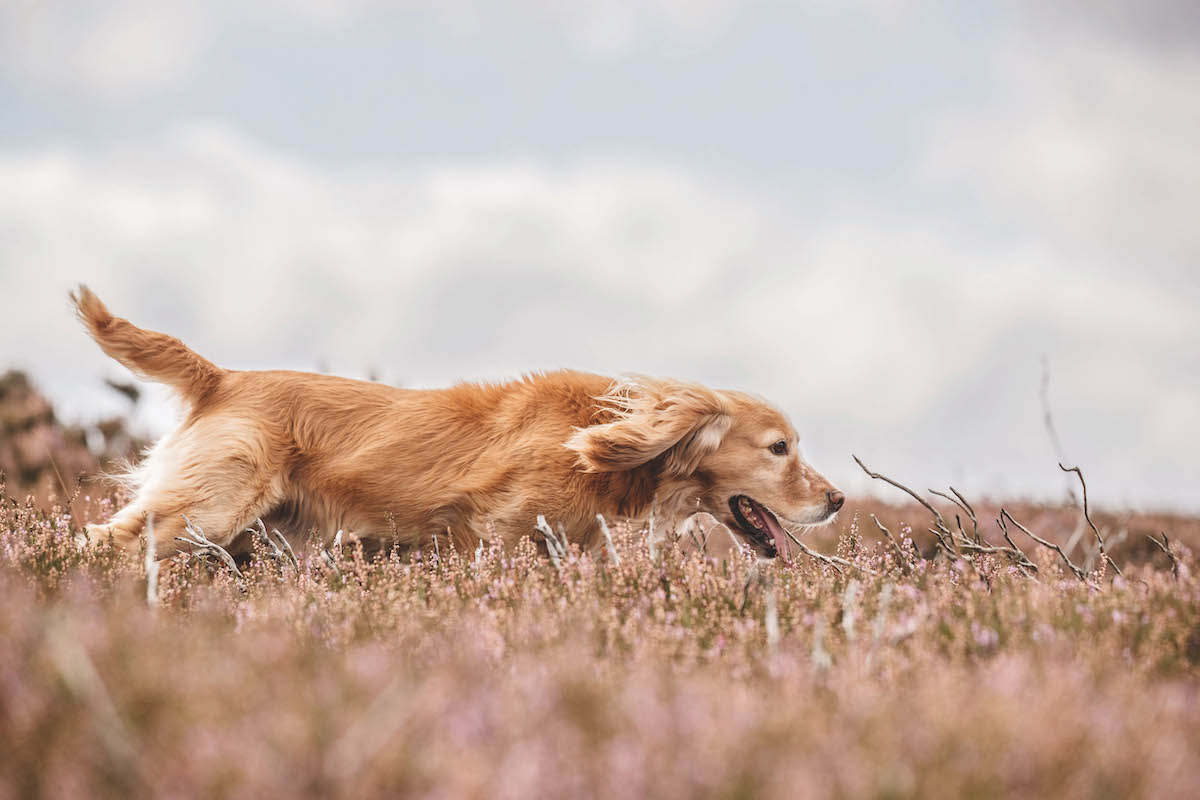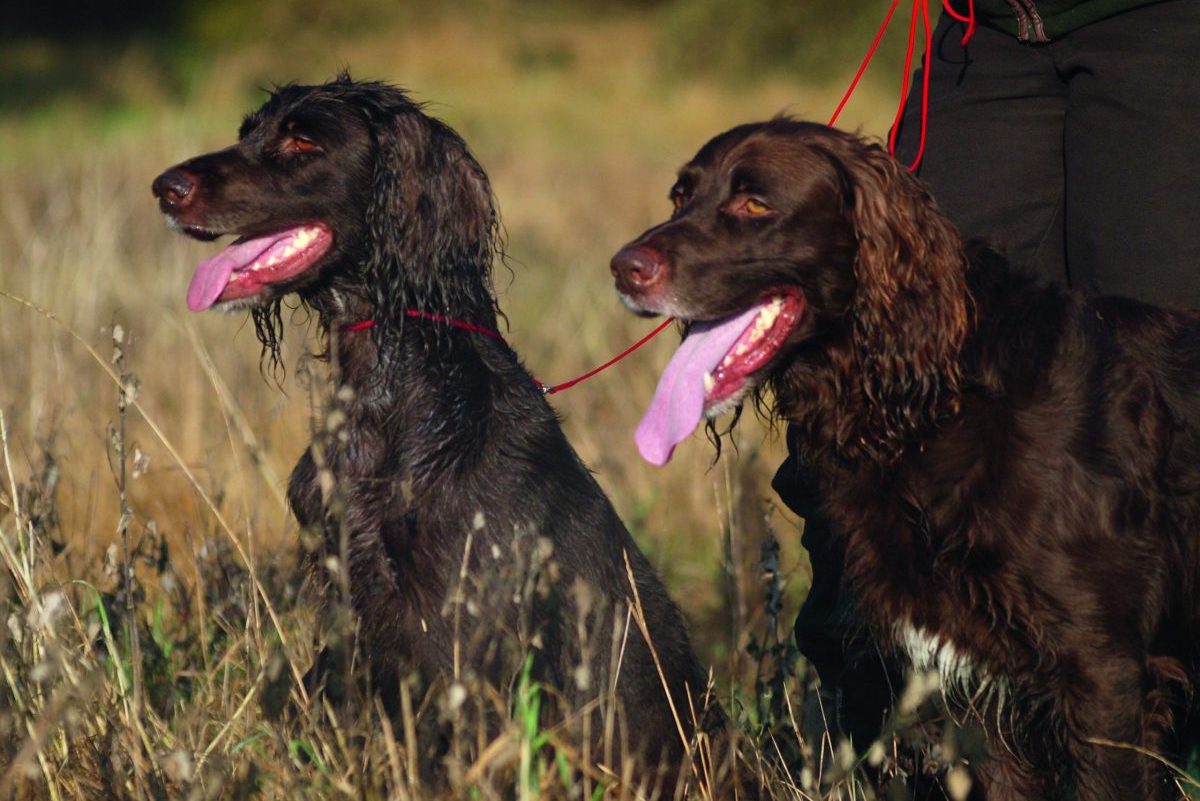Sealyhams – leaders of the rat pack
Nick Ridley sees what a pack of Sealyhams can do when he joins them in action on a chicken farm, hunting down that most persistent of foes – the common brown rat

Last summer I joined Harry Parsons and his rare pack of Sealyham terriers as they hunted rats along the banks of the river Taw in Devon. Although on that occasion their quarry proved quite elusive, Harry had promised me that my next trip out with the pack would be very different – and so it proved to be.
As I headed down the A303 towards Exeter the sun was just peeking over the horizon and as I passed Stonehenge I got to thinking about the success of the brown rat. There is little doubt that most people detest these scaly tailed rodents, it is also common knowledge that they spread disease, contaminate foodstuff and cause serious damage to buildings and materials.
Rats carry very serious diseases, which can be potentially fatal to humans and other animals – Weill’s disease and murine typhus, as well as organisms such as salmonella bacteria, parasites and viruses. “Rattus norvegicus” has only been a resident in the UK since the early 18th century and ever since then we have fought a never-ending battle to control the growing population. They can breed all-year round, and a female rat is able to breed from six weeks old and can have up to six litters in a year with an average of around eight pups, so it doesn’t take long for numbers to get out of hand. Rats are also a threat to the environment, predating on bird eggs and young chicks.
After nearly four hours in the car, I finally pulled into the farmyard, by now the sun was blazing high in the summer sky. During a much-needed cup of tea, Harry explained the campaign of action and made it quite clear to everyone present that this was not a “hunting trip” and they were not there for “a bit of sport” this was a pest control exercise, pure and simple, and the aim was to kill as many rats as possible. The farm produces free-range eggs and every 14 months the laying sheds are emptied of chickens, the sheds are then dragged to fresh ground, steam cleaned and restocked. In the process, hundreds of rats are displaced, posing a risk to human health and the environment.
Working the ditch
Moving the sheds is a quite a task and would take at least a couple of hours, so Harry Parsons and his crew decided to tackle a drainage ditch in the hope that some of the rats that had been disturbed when the chickens had been removed would have taken sanctuary in the banks. Nell, a small Jack Russell, was soon marking some well-used holes and as Harry and his colleague Nigel got to work with the spades, rats started to bolt along the bottom of the ditch. The action was very fast and very furious and CC, one of the Sealyhams, really showed that Harry and his partner Gail’s efforts to recreate a working Sealyham terrier had not gone to waste. She was an efficient and effective rat-killing dog, she showed a high level of intelligence, which is a trait of the breed, and was very careful to pick her moments to strike at fleeing rats. After killing more than a dozen rodents she didn’t have as much as a scratch, which is a credit to her timing and technique. The open ditch also gave the team an opportunity to let a couple of young terriers join in the excitement and it was interesting to watch how their confidence grew during the morning. It wasn’t long before they were catching and killing the rats with a quick shake, however they couldn’t quite get the idea that once a rat was dead they needed to drop it and get ready for the next one, but that will come with practice. The dogs accounted for around 38 rats from just one small area of the ditch and by now the sun was high in the sky and everyone needed a break before moving on to the chicken shed.
Moving the shed
The operation to move the shed commenced after lunch. The first stage was to drag a steel cable under the sled runners to break the vacuum, this was done using a couple of tractors and it was good to see an old Fordson tractor alongside a modern John Deere. Once the cable had done its job the shed was hitched up and slowly dragged to fresh ground. Almost immediately, the rats started to make a run for it, but the dogs were more than up to the task of intercepting the fleeing rodents. The young dogs had been washed down and put back into the dog boxes and the more experienced members of the team were allowed to strut their stuff. It was hot, dirty, tough work and I couldn’t believe it when Nigel and Mark started to crawl underneath the shed. Harry explained that the rats hide under the floor runners and the dogs can’t get to them so the lads crawl along and “persuade” the rats to leave. I honestly couldn’t think of a worse job, but by the amount of action going on underneath the shed and the increase in the number of rats bolting outside it was proving to be a sound tactic. At one point a faster-than-normal rat made it to Harry’s truck and took refuge in the engine bay. It proved to be quite stubborn when encouraged to vacate its new-found home.
Despite all of the mayhem and action going on everyone was remarkably calm and quiet. I have been ratting where there was a lot of screaming and hollering, but there was none of that here. There was the occasional shout to draw the dogs’ attention, but other than that there was an air of professionalism from both the humans and the dogs. Harry’s dogs normally work as a “hunting pack” and are particularly disciplined and it was noticeable that despite the dog’s blood being up there was not one squabble or fight and it wasn’t long before the flood of rodents slowly became a trickle and the wheelbarrow of the deceased rats was close to overflowing. In just over four hours, 354 rats had been quickly and humanely dispatched. It was a truly impressive display of efficient pest control and I heard a rumour that the next outing may well be to a pig farm – I can’t wait!
Watch the Sealyham pack hunting rats on the River Taw below:









